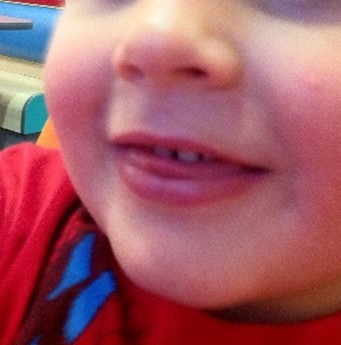Lisps
What is a lisp?

A lisp happens when a child pushes their tongue too far forward between the front teeth so that the /s/ and /sh/ sounds are more like /th/. For example, the word ‘sock’ might sound like “thock” or the word ‘shoe’ like “thoo”.
We call this an ‘interdental lisp’ because the tongue goes between the front teeth. This type of lisp is common in children until about the age of 5 years and is part of typical speech development.
There is another type of lisp called a ‘lateral lisp’. This is where you hear the air escaping out the sides of the tongue. This type of lisp is not a part of typical development, and the child may benefit from some support from a Speech and Language Therapist.
If your child is having difficulty with other sounds, not just /s/ or /sh/, we recommend looking at How do speech sounds develop? and Why does my child find some sounds difficult to say? for more information about when and how different speech sounds develop, and other types of speech sound difficulties.
My child has a lisp, what can I do to help?
There are lots of things you can do at home to help your child with a lisp:
- Model the adult pronunciation of the word.
Remember that lisps are a common part of speech sound development, and most children grow out of lisps when they are ready. You can download our Lisp Advice handout here.
Last updated10 Sep 2025

